The evolution of winegrape clones has become a time of discovery in Washington State, and promises to change the landscape forever
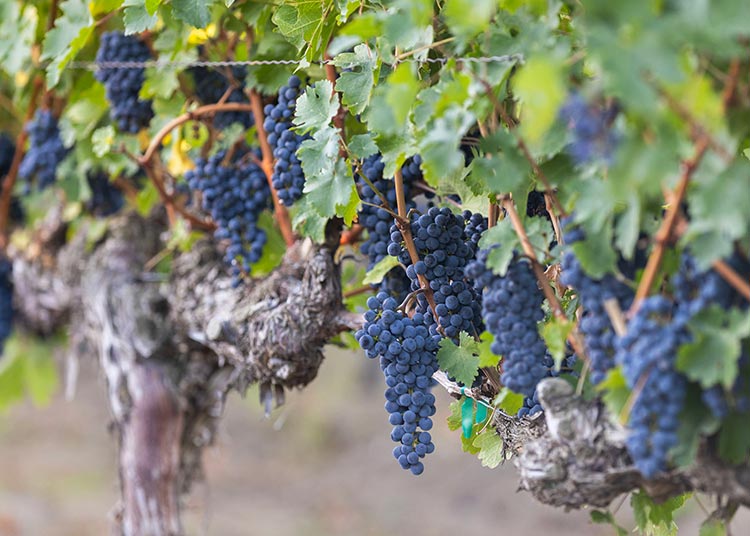
Written by L.M. Archer
THIRTY years ago, Washington wine growers didn’t have a lot of clones to choose from when planting vineyards.
At that time, only a handful of approved clones made it through the state’s strict certification guidelines, developed to prevent diseases and pests like phylloxera. A few did make it through, like the ubiquitous Cabernet Sauvignon Clone 8, dubbed “Washington’s Cabernet clone.”
“I’ve been making wine in Washington since 1988, and we always had this old, reliable Clone 8,” says veteran winemaker Charlie Hoppes of Fidélitas. “It served the growers well, because it was a clone that seemed to stand up to any kind of winter damage fairly well. But I always thought it was a little bit one-dimensional.”
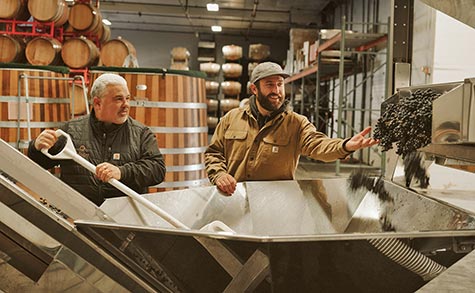
Hoppes founded Fidélitas in 1999, after a nine-year stint at Chateau Ste. Michelle (CSM) under the aegis of Mike Januik. Januik followed suit, founding Novelty Hill-Januik wineries that same year. Today, both claim fame as Washington state vanguards in clonal selection.
So does wine grower Dick Boushey, of Boushey Vineyard in Grandview. Boushey also manages 12 different vineyards on Red Mountain. Highly regarded among Washington grape farmers, Boushey recalls planting Chardonnay in the 1980’s and 1990’s using a clone originally called “the Prosser clone.”
Later dubbed “the Clore clone,” it hailed from the test vineyards of Dr. Walter Clore, deemed the “Father of Washington State wine.” As the first head of WSU Prosser Research Center, Dr. Clore analyzed over 300 grape varieties throughout the 1960s and 1970s. In 1976, he published his seminal work, “Ten Years of Grape Variety Responses and Wine-Making Trials in Central Washington.”
“The varieties he planted in his trials became the source of much of the plant material that nurseries used to propagate their vineyards,” explains Boushey. “The Clore clone of Chardonnay was part of those selections, which also included Cabernet Sauvignon, Cabernet Franc, Merlot, Riesling, Semillon, etc.”
Boushey attributes the state’s increase in clonal material to improved plant evaluation and testing over the past ten years. “Washington was a little bit behind the curve, although we’re catching up rapidly,” he says.
Time of Discovery
“This evolution of figuring out which grape clones grow best where, and which ones are preferred for various styles of wine, has become a time of discovery in Washington State,” Boushey notes. “There are ‘winemaker clones’ and ‘grower clones.’ They ripen differently, so you can spread out your harvest.”
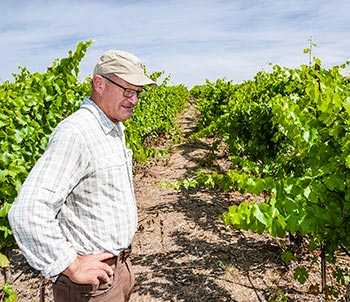
“Grower clones” highlight ripening variations, from early, to mid, to late harvest. They also toggle between berry variations like size, skin color, and thickness.
By contrast, “winemaker clones” tend to hone in on aromatics, mouthfeel, and tannin levels. “If you’re a winemaker, and you have four different clones, it really gives you a lot of tools to work with,” says Boushey. “They are distinctly different, and it adds a whole different palette for the winemaker to work with, and distinguish you from your neighbor.”
Clonal selection and variety is important to provide layering to winemaking,” concurs Josh Lawrence, co-proprietor of Gard Vintners.
Josh and Lisa Lawrence founded Gard Vintners in 2006 with clonal diversity in mind. They also farm sustainably, sourcing from 14 different estate vineyards in four growing regions, from Royal Slope, Columbia Valley, and Wahluke Slope, to The Rocks District of Milton-Freewater.
“Each clone will provide a specific profile, so having more than one clone might potentially increase quality variables like aromatic presentation, flavors, and phenolics in the final blend,” adds Lisa Lawrence. “We have 30 varieties planted, with a wide selection of clones.”
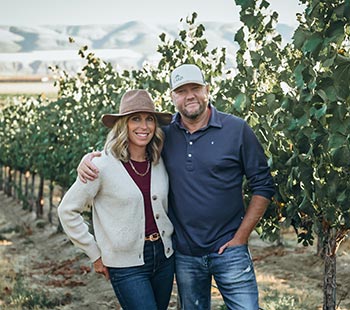
Clones also help them connect with consumers. “As an estate winery, everything we do is rooted in the vineyard, so it’s an important part of our story,” says Lisa Lawrence. “Our customers enjoy that connection, learning about the vines, and the clones further strengthen that connection.”
Sweet Spot
Unquestionably, fine-tuning clonal selection and stylistics takes time, patience and skill. Some winemakers prefer drilling down into single vineyards, blocks, and clones. Others opt for crafting complex blends. Regardless, curiosity drives each quest.
“When Quintessence Vineyard was planted in 2010, they planted a lot of different clones, and I was curious, just because I wanted to give our Cabernet some diversity, for Red Mountain Cabernet,” recalls Hoppes. “And then I kind of fell in love with the individual blocks that we were getting from Quintessence.”
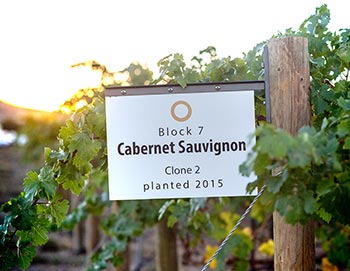
Turns out, Red Mountain’s long, warm growing season proves the perfect crucible for Cabernet Sauvignon clones. Hoppes found his sweet spot.
Today, Fidélitas Quintessence Cabernet Sauvignon blends Clones 169 and 191 sourced from two rocky, sun-drenched blocks. A geek’s delight, it features four different fermentation methods, and 10 types of new French oak barrels.
Inspired by the single-block, single-clone expressions from Quintessence, Hoppes eventually planted his own five-acre estate vineyard on Red Mountain in 2015.
Initially, he sowed Cabernet Clones 2, 6, and 8. “We’ve always made our estate Cabernet just from clones Two and Six,” he says. “We continue to do that, even though we’ve got other clones available.”
Those “other” clones includes a rare Cabernet Sauvignon Clone 412, also planted in 2015. Its stand-alone elegance merited a single-block, single-clone bottling, first produced in 2018.
More recently, Hoppes introduced a powerhouse estate Cabernet Sauvignon from clone 169 for club members to taste side-by-side with Clone 412. “Our wine club members actually talk about their favorite Cabernet clones, which I never thought I’d see the day,” Hoppes laughs.
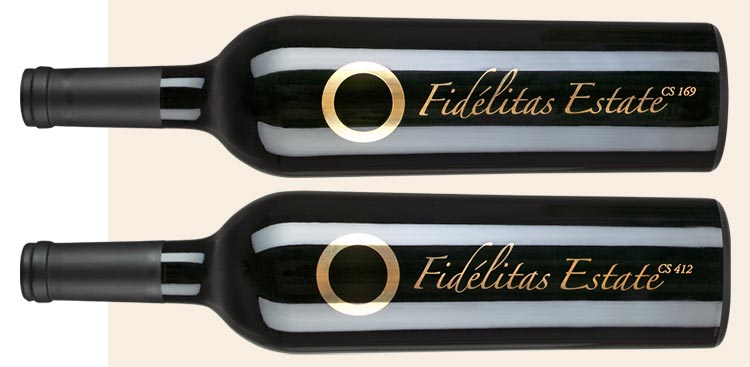
Luckily, Hoppes’ son Will and his talented team still brake for blends, like Fidélitas Red Mountain Cabernet Sauvignon, a cuvée from 12 vineyard partners and 55 blocks across Red Mountain.
Falling in Love
“It’s so funny,” admits Boushey. “Once a winemaker falls in love with a clone, that’s all they want. It’s their style.”
Indeed, favorite clones inform Novelty Hill’s Stillwater Creek Vineyard, located on Royal Slope, part of the Frenchman Hills, in Washington State’s Columbia Valley.
“The first grapes at Stillwater were planted in 2000,” recalls winemaker Mike Januik. “Tom Alberg was the person who started the vineyard.”
Serendipitously, the two partnered in Novelty Hill/Januik in 1999, after Januik left CSM. Intrigued by the site’s higher elevations and fractured basalt soil series, Januik agreed to help Alberg plant a vineyard there.
“At that time, people were just starting to talk about different clones,”Januik says. “The challenge was actually finding plant material then that would work.”
Thus began their painstaking patch working. “That first year, we planted a few different clones of Cabernet, and then after that, maybe three different clones of Chardonnay, and just kept adding more and more clones over time.”
Favorites included two prized Sangiovese clones from Marchese Piero Antinori. (Januik met Antinori’s viticulturist in 1995 while working at Col Solare, a joint project between Antinori and Chateau Ste. Michelle on Red Mountain.)

“The selection has improved over the years, and a place like Stillwater, the reason we have so many different clones of something like Cabernet is because we’ve continued to add plantings over the years,” says Januik. “And with those later plantings, we’ve had newer clones that have become available. Of course, we’re not gonna go out and plant more just because new clones become available. It has to be combination of planning, and then being able to get to the plants.”
Wildcards
Ultimately, clonal diversity changes the landscape of Washington wine forever. Yet, as the story of Washington State clones advances, a few wildcards remain.
Firstly, rootstock selections. “Now that the winemakers have been working with them [clones] for about 10 years, they’re the ones that are deciding what to plant,” says Boushey. “But now, what rootstock? We have a good idea. We want phylloxera-resistance, we want drought-tolerant, we want winter hardiness.”
“I know that at Stillwater, the person who manages the vineyard, Ed Kelly, came here after about 30 years of experience in Napa and Sonoma,” says Januik. “So that was the mindset for him.”
Interestingly, Stillwater’s experiments grafting a test block onto different root stocks proved unsuccessful. Consequently, rootstock selection remains an exception, rather than a norm for Januik.
“We do not use rootstock unless we have nematode or phylloxera concerns, which normally we don’t,” confirms Josh Lawrence.
Additionally, the climate change wildcard bedevils every winemaker’s deck.
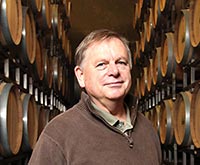
“I certainly have seen the effects of a warming climate,” says Januik. “It’s my 40th harvest and winter. Wintertime colds were pretty commonplace back in the early days, in the 1980s and 90s. In 1996, we had a freeze that took out about half the grapes in the state. We just weren’t used to seeing it be as warm and balmy in the wintertime as it is seems to be a lot of the time now.”
Temperature increases also impact heat accumulation during vine growth, also known as growing degree days. “We’re having more growing degree days,” says Boushey. “And clones could play into that. We’re doing a lot of research on which varieties do well in extra heat—Grenache and Mourvèdre, they love heat. The problem with those varieties is they are not winter hardy.”
Finally, Ste. Michelle Wine Estates (SMWE), the largest wine producer in the state, announced to grape growers in 2023 that the giant company would be decreasing their grape demand 40% over the next five years, slapping down another wildcard. “You know, everything’s cyclical,” Boushey acknowledges. “I do know we need less fruit probably as Ste. Michelle steps back.”
In the end, Boushey views the SMWE announcement as an opportunity to upgrade vineyards, pull out unprofitable or diseased material, and reset clonal selection. “We should always be renewing, and looking at those things, “ he concludes. “Most good growers do that. Ultimately, you have to grow better grapes, and make better wine.”
